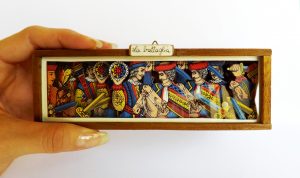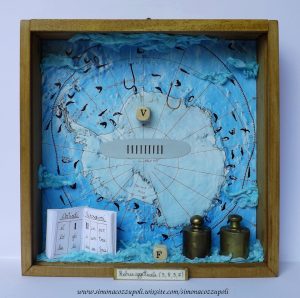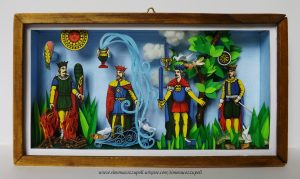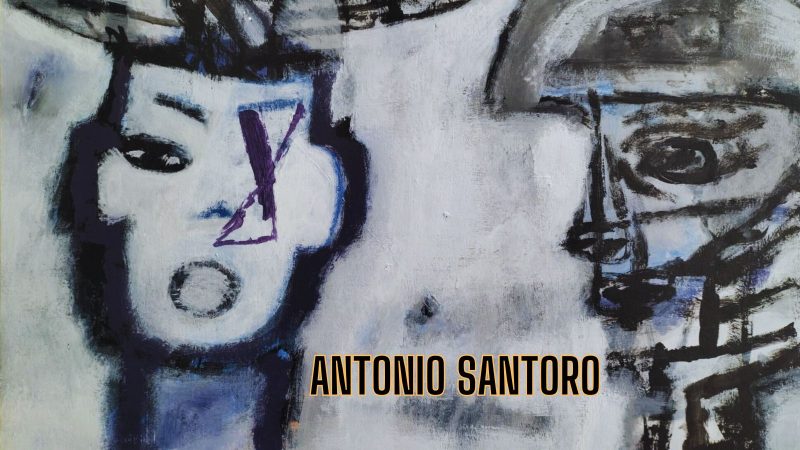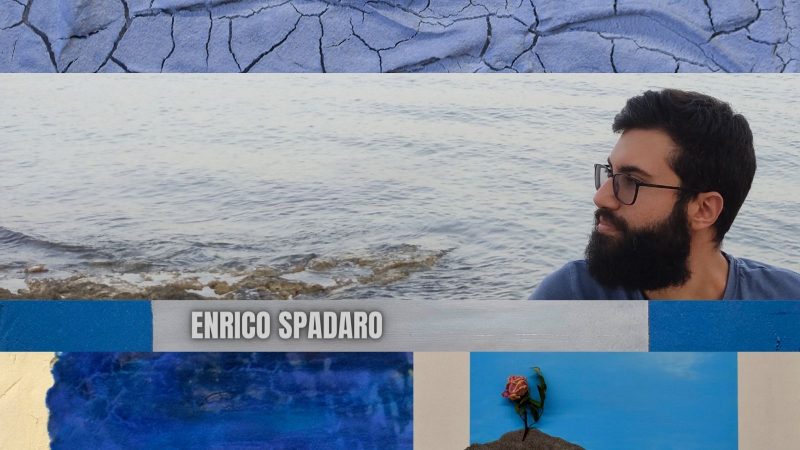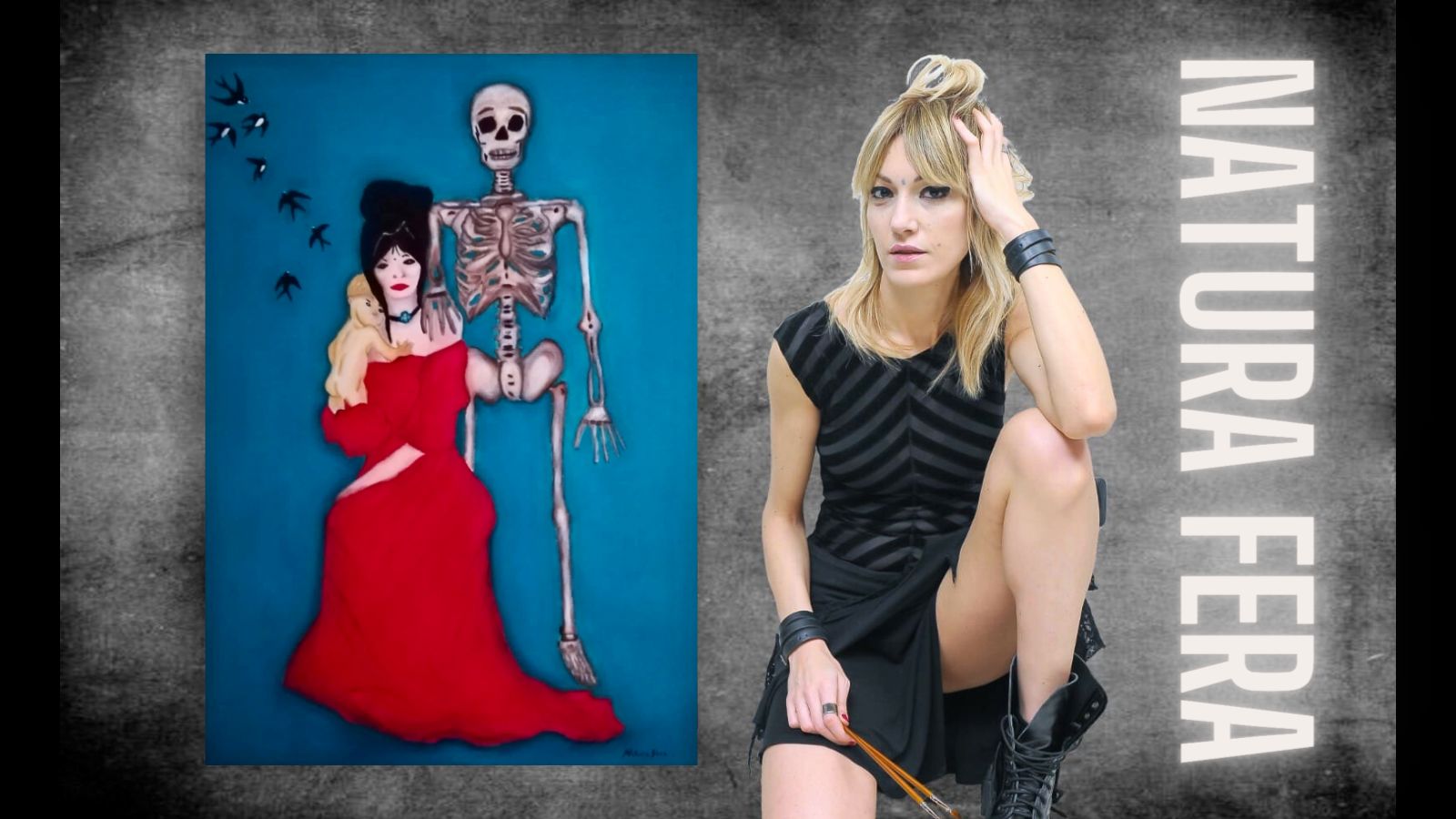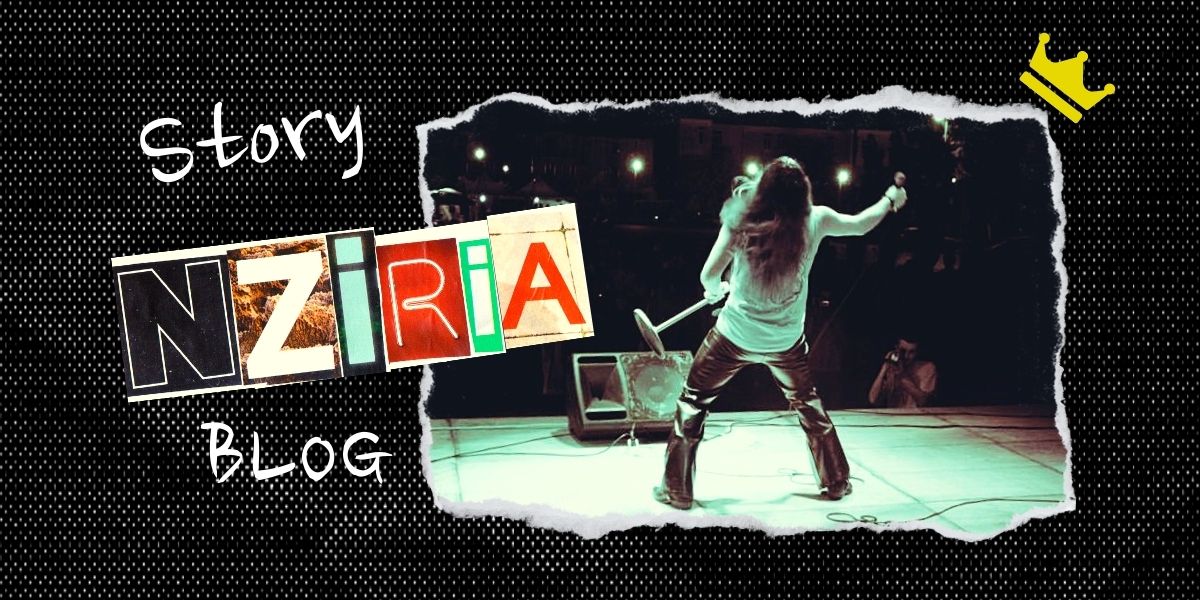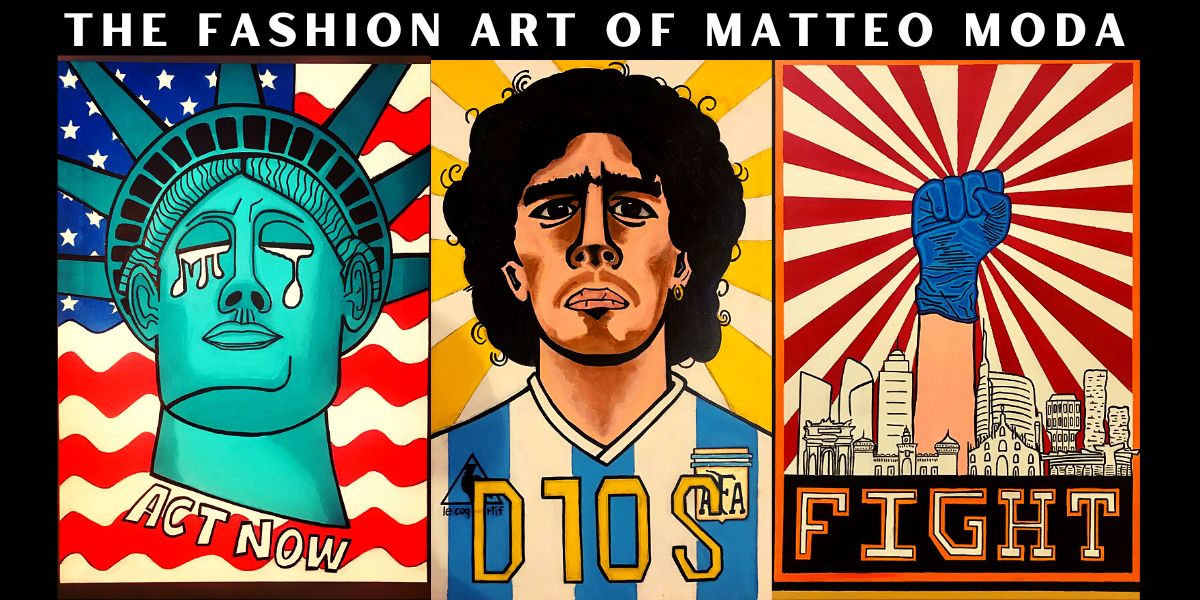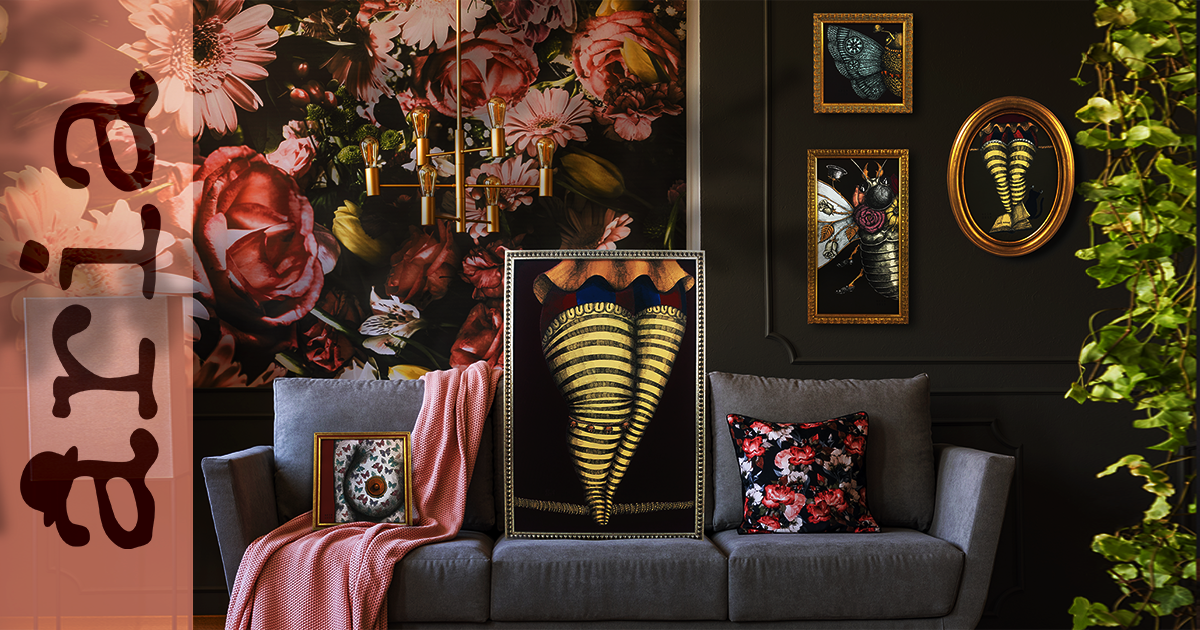Simona Cozzupoli: when imagination becomes a three-dimensional reality
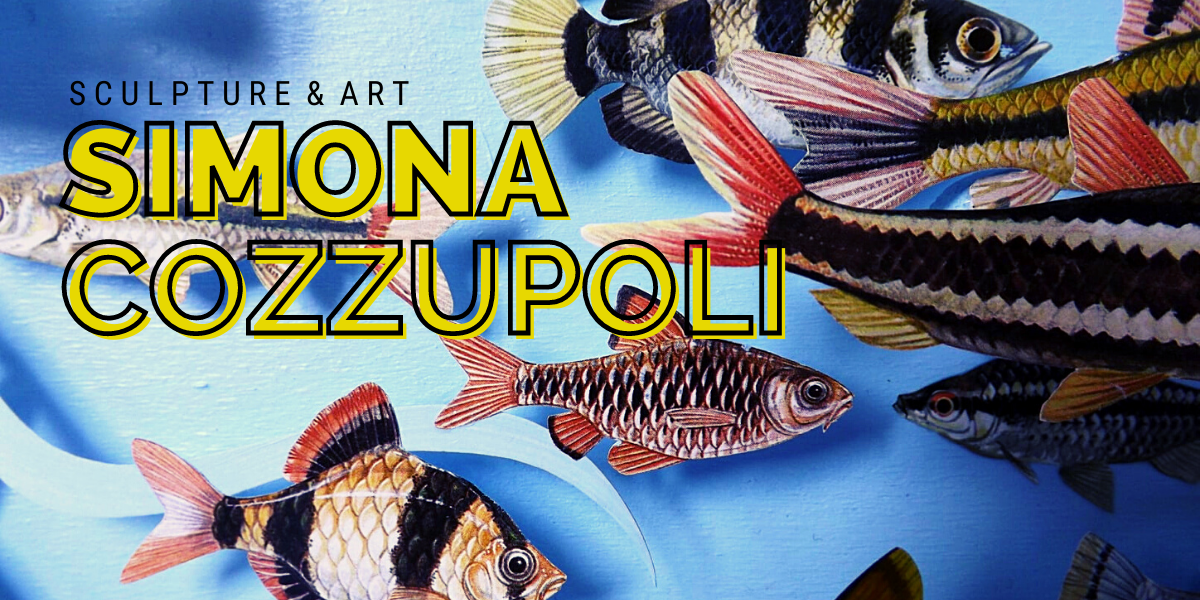
Can the words be tangible stories for the senses? Can the wonder be transformed into a three-dimensional emotion? These are the challenges that Simona Cozzupoli, a Milanese artist who decided to tell Nziria about her art, faces every day. And we have discovered that when imagination becomes reality, the result is truly surprising.
Born and raised in Milan, Simona graduated – with full marks – in Literature, specialising in History and Criticism of the Arts, with a thesis on the History of Contemporary Art. For ten years she has been teaching art history and humanities at several private high schools. But at the same time her passion for three-dimensional compositions, created through a skillful mixture of materials, has grown. She in fact has become an established and very popular artist.
Just to give a few examples of her achievements: in 2017 Simona personally created her own website. In the same year, she set up exhibitions and installations in well-known cocktail bars, literary cafes, and shops in Milan. For instance, BackDoor43, also known as ‘the world’s smallest bar’. Here Simona has set up both the shop window and the indoors. But her masterpieces are also in Mag Cafè and Bond, both in the Naviglio Grande, and many more.
During the Fuorisalone exhibition in 2019, Domenico Orefice invited Simona to expose her works in his fabric show ” Mirabilis patterns”, at the prestigious shop Lo Studio in Via San Maurilio, in the 5 Vie area. The latest exhibition, set up in the Mare Culturale Urbano (an artistic and cultural production centre, located in a seventeenth-century farmhouse), was a great success among visitors. For this reason many websites and online magazines, even the paper one Mi-Tomorrow, wrote about it. As a result of its success, the managers of the exhibition have decided to extend it: from the end of October 2019 to the end of February 2020. Lastly, from October 2020 some of her artworks with playing card figures are on sale at the Mudec Design Store.
These artworks challenge the boundaries of the abstract in a way. Simona explores the untrodden territories of the oneiric dimension, keeping as a common thread the theme of wonder, but in the sense of access to knowledge. Each work is imbued with the artist’s immense artistic and historical culture. Her total fascination for the world of childhood is also evident, as well as the innocent fantasy belonging to the children. Simona loves the infinite possible combinations between words and images, which allow her to create new different stories.
It is also the Jungian way of conceiving chance that helps her in the creative process. All these conceptions and philosophies are expressed in precious glass-enclosed boxes containing micro-worlds, or in retro-style showcases, large enough to contain miniature universes. The upshot is the creation of an eccentric reality, out of the ordinary and simultaneously concrete, accessible to the human senses.
Nziria did not miss the opportunity to get to know Simona even better.
You say you learned as a self-taught artist. But was there a trigger, or a specific event in your life that sparked you into becoming the artist you are?
I truly believe that my studies have been a powerful inspiration for my natural creative inclination. The discovery of the works of the most representative artists of the various historical periods, both in the books and in museums, has given me a vast selection of artistic expression to be inspired by, more or less consciously. I cannot say whether there was a specific event that triggered me to become an artist. I have always been particularly creative since I was a child. But I can say that my first assemblages were born out of a strong desire to express some ideas I was fond of by putting different objects together.
The purpose was to create something that was not there before. Something that was different – in terms of quality – from the simple result of the ‘sum’ of the objects used at the beginning. In a sense, I can say that in that period I clearly understood that I am naturally inclined to express fantasies through objects. For me, objects are tools that can visually condense speeches. I think it was at that moment that I realized I was going to be an artist. I was going to ‘speak’ with objects.
Let me give you some examples. In the artwork Barbie – canarini, a canary cage contains some dolls with seeds as feed. I remember my association of Barbie’s blonde hair with the yellow colour of canaries. So this unusual and unexpected juxtaposition enchanted me, and it could generate a multitude of thoughts. Moreover, one of them, with her arms hanging from a suspended perch, evoked the image of a circus trapeze artist. This is a theme that is very dear to me, and which I have subsequently addressed in various works.
Another example is Homo-humus. It is an assemblage consisting of a doll with its feet planted in the earth of a vase. There is a crown of a tree instead of its head. And marker clarifies the association of the objects. It highlights the etymological kinship between the words ‘man’ and ‘earth’ in different languages, starting with Latin. And lastly, in Occhio Magico (Magic eye), two canvases glued back to back are crossed by a panoramic peephole in each door. This leads the viewer’s gaze, literally, beyond the canvas. At this point, it is rather hard not to believe that the virtual meeting with Lucio Fontana, which took place during my studies, did not influence this association of mine.
And how much has literature influenced your artistic vision?
Literature, like art history, is a powerful creative stimulus for me. The natural combinatorial urge that drives me to assemble objects, or to create showcases and collages, spontaneously directs me towards the idea that literature is a combinatorial game. Italo Calvino’s ‘The Castle of Crossed Destinies’ expresses this my passion in a paradigmatic way. It is a fantasy novel, in which the story is born and evolves according to the random combination of a deck of tarot cards. When the arrangement of the various figures suggested a meaningful plot to the author, the story was born. I remember that at some point I realised that this compositional process, on a literary level, was the same as that which governed my creations with the figures of the playing cards, on a visual level.
Initially, the figures in the deck of Neapolitan cards bewitched me. When I tried to decontextualise them to see if they could become something else, I realised that the circus world almost always emerged. In the “donna di bastoni”, it was easy to see a juggler throwing sticks in profile, whereas in the “donna di coppe” card I found a tightrope walker holding a large number of cups placed on black and white trays, which had been made by cutting out the backs of cards. In the re di spade card, in front and with his left-hand open, ready to grasp a sword, I found a juggler throwing swords.
All these figures also stand on a pedestal, which when thinned out easily becomes a rope. The position of the feet of the characters seems to confirm my circus interpretation. In all cases it looks remarkably like that of a dancer or acrobat.
What do you think is your calling card, and why this focus on three-dimensional art?
I suppose my hallmark is the process that underlies all my creations: the exploration of connections between images and objects around me, whether visual or symbolic. This approach is based on the idea that art originates from the recognition of something pre-existing. It is therefore not a prerogative of contemporary art, as one might think at first – cf. Duchamp’s ready-made – but rather the basis of the artistic activity itself.
 These collages allow me to experience the expressive possibilities of combinatorics. In my opinion, creativity is a combinatorial game guided by pareidolia. Pareidolia is a sensorial modality that underlies our perception of the world and works as a projective test. In other words, since our expectations influence our perception, we see what we want to see everywhere we look. In the clouds, in the bark of trees, in the stains on peeling walls. And why not, even in the decks of cards, which can be leafed through like a book of tales. And this is what Leonardo da Vinci already recommended to artists. A proof that even at that time the pareidolic ability was considered a real method of artistic production.
These collages allow me to experience the expressive possibilities of combinatorics. In my opinion, creativity is a combinatorial game guided by pareidolia. Pareidolia is a sensorial modality that underlies our perception of the world and works as a projective test. In other words, since our expectations influence our perception, we see what we want to see everywhere we look. In the clouds, in the bark of trees, in the stains on peeling walls. And why not, even in the decks of cards, which can be leafed through like a book of tales. And this is what Leonardo da Vinci already recommended to artists. A proof that even at that time the pareidolic ability was considered a real method of artistic production.
My love for three-dimensionality probably stems from my fondness for poetic objects. You can find these objects at flea markets, which are the favourite destinations of my artistic wanderings in search of materials. My collages themselves are three-dimensional. I like to place thicknesses under the cut-out images so that shadows are generated. But I also like to place the passe-partout at a different depth of the frame than the background with the composition, to emphasise the three-dimensionality of the object created. “The important thing is to create objects, to be placed outside of us, well detached from us”, wrote the Magic Realism theorist Massimo Bontempelli.”And with them change the world”. This is a statement that strikes me very much and one that I totally agree with.
Is there one work among your many that you have created that you are particularly fond of and why?
There are many works I am particularly fond of, and I find it difficult to choose just one. But usually, the last one I made is my favourite. So right now my favourite work is “Contemplative Book”. An unreadable book/object, but with a circular opening through which you can frame the sky for “contemplative” reading. The reference is to the ‘templum’, the circular portion of the sky. Etruscan priest identified this “templum” with the lituo (a curved stick at the top). Then they observed the flight of birds from which to draw auspices. This work is related to the series of “Templum” and “Templa” panels; one or more circles of the sky are crossed by miniature origami birds. They allude to the divinatory technique of “auspicia”, which literally means “bird watching”. (from ‘avis’, bird, and ‘spicio’, to observe).
In this difficult time of history, the promotion of art has changed abruptly. The government ordered the closure of museums for a long time, but also of the community centres, theatres, cultural workshops. In your opinion, have young people become more curious about new ways of artistic expression, despite these months of isolation? How much did social media contribute to the transmission of your art? Will we continue to enjoy online art in the future post-Covid life?
In these difficult times, online activities have certainly been essential for keeping the interest in art alive. Certaintly, these new ideas have found fertile ground in these times of uncertainty. For example, I found many initiatives by Frattura Scomposta Contemporary Art Magazine very interesting. There was a creation of a virtual museum that brings together the works of artists recommended by the magazine, among whom I am one.
It is probable that, at least initially, there was an explosion of enthusiasm for art among young and old people. Perhaps even in post-Covid life, some of the many online innovations that have arisen out of necessity will be maintained. However, a life in which all human activity takes place remotely is the script for the worst dystopian film I can imagine. Education and a lot of work have moved to the web for many months now.
The desire to get away from the computer screen or mobile phone and get out of the house and meet art and people face to face is an impelling necessity. At least, it is for me. I have decided, by choice, to renounce a twenty-four-hour internet connection with my mobile phone in my daily life. I live in Milan. Personally, I can’t wait to get back to walking through the halls of the Pinacoteca di Brera, the Ambrosiana, the Museo del Novecento, the Castle museums, and so on.
For me, social networks are great tools for artists and for promoting their art. I personally use Facebook and Instagram constantly. They have become essential instruments both in normal times and, even more so, in lockdown times.
Chiara Grasso_ Nziria Team Home


